A Masterpiece Restored: LACMA's Tibetan Painting of Yama and Yami
LACMA's Tibetan and Nepalese paintings
A Rare and Accomplished Painting
Esoteric Imagery
Protectors of the Monastery
Why is conservation needed?
The Conservation Process
Why Conserve Yama and Yami?
A Discovery under the Fabric Borders
Conservation treatment began with the removal of the painting’s faded green silk borders, which were not only weak and tattered but also had water stains. When they were removed, it was discovered that the stitches did not correspond with the sewing holes in the thankga, indicating that the borders were not part of the original scroll but had been added later. This discovery would later play a small part in our decision to mount the scroll on a flat panel.
Recording the Thangka’s Condition
After the borders were removed, the locations of all areas of pigment loss, flaking, and damage were diagrammed on a Mylar® sheet. It is essential to document the artwork’s original condition to maintain an archive of its history.
Cleaning the Surface and Reducing the Buckles and Creases
To reduce water stains and discoloration on the painting’s surface, the conservator used an ultrasonic mister and suction platen. A Gor-Tex® humidification package was used to relax and reduce the painting’s surface distortions such as buckling, creases, and folds. Both the stain reduction and the humidification techniques were deemed to be among the least intrusive and most effective for using moisture in conservation treatment. The thangka was dried using spun bond polyester and blotters; a light weight was used to minimize distortions to the painting’s flat surface. 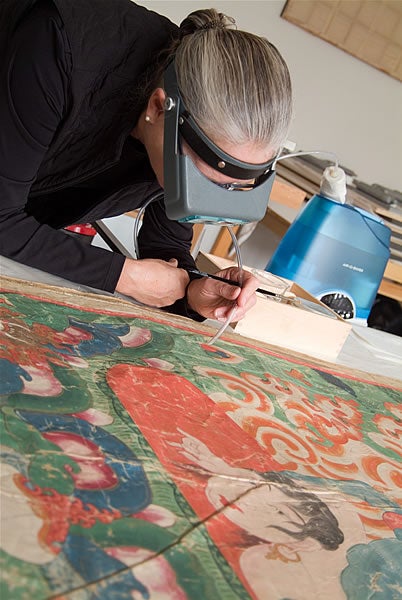
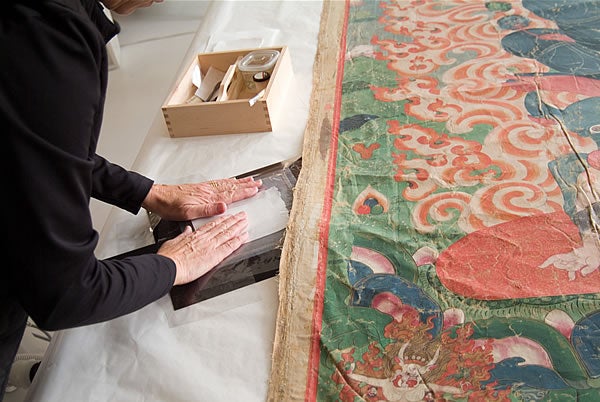 Stabilizing Flaking Paint
Stabilizing Flaking Paint
The painting, in the format of a scroll, was executed on woven cotton cloth using distemper, a type of paint that is created by mixing mineral pigments with a binder of animal glue. The time-consuming process of stabilizing areas of lifting and flaking paint was undertaken after the thangka had dried. With visual assistance provided by a magnification device, the conservator meticulously applied a conservation-quality adhesive to the problem areas over the course of three months. 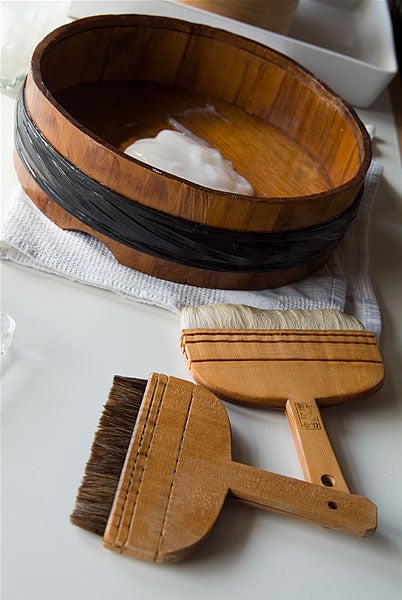
Flat Mount or Scroll?
All thangkas are created in a scroll format. They are rolled up while they are stored, and then unrolled for display and veneration in a monastery. Maintaining a painting in its original scroll form is preferable for historical reasons. In this case, however, the risk of further damage from rolling and unrolling was too great because the painted surface was so fragile. The conservators and curators decided to mount the painting on a flat panel for both storage and display. That the borders turned out to be a later addition to the painting was also a factor in the decision.
A Japanese Panel for a Tibetan Painting
For the thangka’s new mount, the conservator adopted a method used for traditional Japanese screen panels, which are very light in weight yet also extremely stable. The structure of the custom-made mount consisted of a light-weight panel with a wooden lattice covered with multiple layers of Japanese paper; wheat starch paste was used as the adhesive. Soon the mount would be ready to receive the thangka. 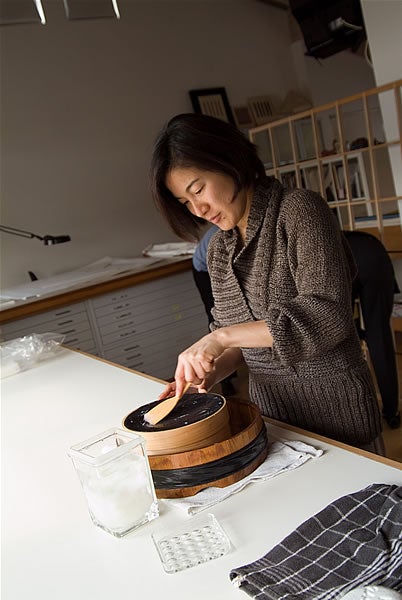
Mounting the Thangka
The thangka was placed on the panel using a "strip-lining" method, which is a common technique in painting conservation. First, all four edges of the thangka were lined with strips of cotton cloth. A cotton flannel was then placed behind the thangka to provide additional "nap bonding" support; that is, the rough texture of the flannel would supply friction. The tacking edges were wrapped to the reverse of the panel, where they were secured. This method allows the thangka simply to rest on the surface of the panel, rather than being mounted overall to the support.
Visual Integration
After considerable review and discussion with the curators, the conservator decided to isolate some major areas of color loss with an adhesive and then inpaint using watercolor and pastel pencils. This color compensation was not meant to disguise the loss but rather to help visually integrate the image for the viewer. 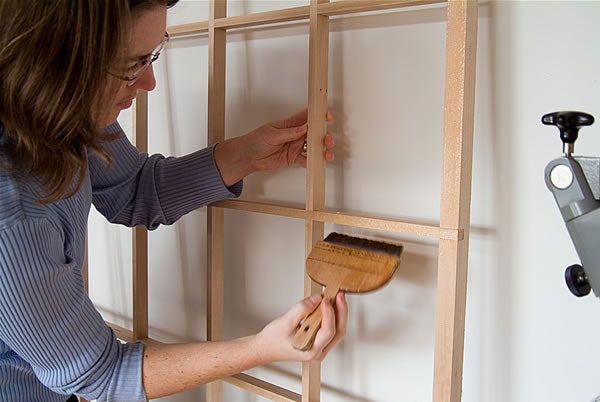
The Finishing Touch
The conservator added decorative cloth borders to the edges of the thangka to give it a finished appearance. The decision to use red and blue cloth was based on a standard thangka mount in LACMA’s collection.
In the Gallery
Controlled, low levels of light are used to illuminate Yama and Yami in the gallery, due to the light sensitivity of the materials. Light damage to an artwork is cumulative and, once it occurs, irreversible. It is the responsibility of the curatorial and conservation departments to make artworks accessible to visitors and, at the same time, to prolong the life of the artworks so they can be enjoyed by future generations. 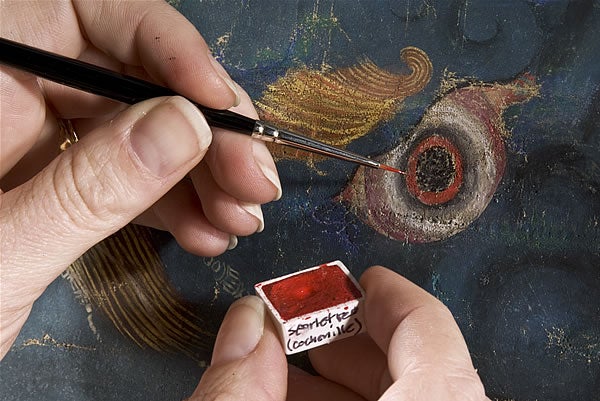
Paper Conservation Department (2007)